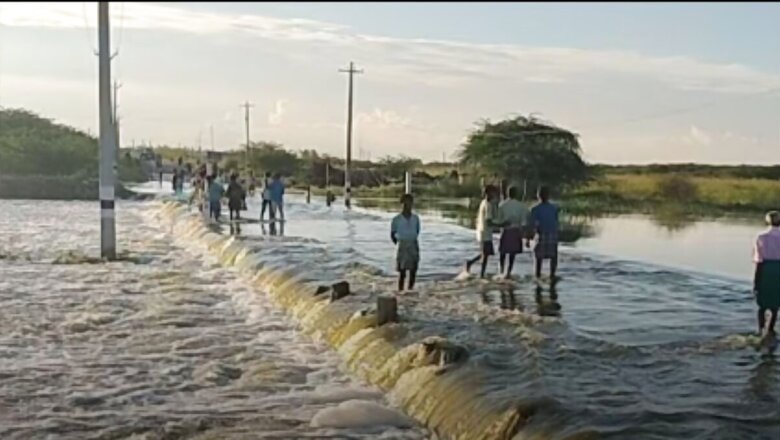
views
In the recent week, the Virudhunagar district in Tamil Nadu witnessed widespread rainfall coinciding with the beginning of the northeast monsoon. The continuous precipitation has resulted in a substantial increase in water levels across multiple water bodies in the district.
Due to heavy rainfall on November 7 and 8, the Kausika River in Virudhunagar is experiencing flooding. Consequently, the Kullursandai reservoir, where the river converges, is now overflowing. To address the overflow, a bridge has been constructed from Kullursandai village to Mathunayakkanpatti.
The Kullursandai Dam is currently flowing beyond its full capacity. This overflow provides irrigation facilities to the villages of Gullurchandhai, Kulakkarai, Mettukundu, Chennelkudi, Chettipatti, Maruluthu, and Kallumarpatti. The dam, now full, has caused the connected canal to overflow, submerging the footbridge on the Kullurchandhi-Matthanayakkanpatti road. Water is flowing up to 2 feet above the bridge level.
Following an extended period, the dam overflows, attracting visitors from nearby villages. Some youths and students, lured by the swift current, engage in activities like fishing and bathing in the floodwaters, often unaware of potential dangers. Residents and farmers express joy as the reservoir reaches full capacity after an extended duration.
Kullursandai, situated in Tamil Nadu’s Virudhunagar district, India, is home to a population of 5,884 residents. The village predominantly relies on agriculture as a primary source of income. Situated in the Virudhunagar district of Tamil Nadu, the Kullursandai Reservoir spans the Kowsika River, a notable tributary of the Arjuna River.
The reservoir attracts tourists with activities like trekking, bird watching, and boating, making it a favoured spot for observing numerous migratory birds and waterfowl. The prime time to visit is from August to February. Formed by the Vaippar River, this reservoir serves as an earthen dam designed for irrigation purposes. It stretches over a distance of 3207 meters and stands at a height of eight meters.



















Comments
0 comment